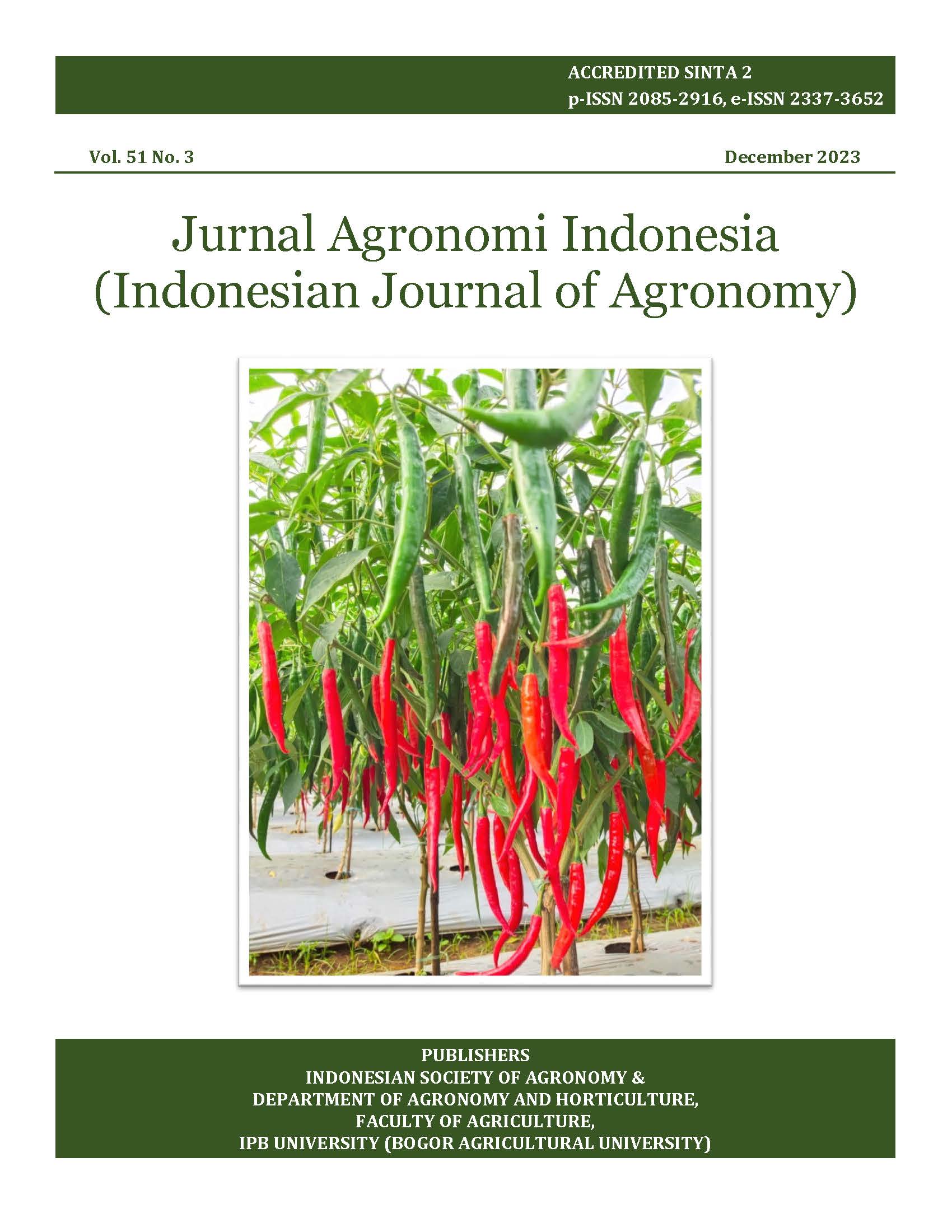Evaluation of qualitative and quantitative traits of ten lowland chili genotypes
Abstract
One of the important stages in chili breeding is the multi-location test. The lowlands became one agroecology in the chili multi-location test because most farmers, especially in Sumatra, plant chilies on the lowlands after the rice planting season. The purpose of this study was to understand the qualitative and quantitative characteristics of chili genotypes in a lowland area. The experiment was arranged in a single-factor randomized complete block design (RCBD) with three replications. The chili genotypes evaluated were four test lines and six check varieties. The quantitative data were statistically analyzed using analysis of variance (ANOVA) followed by evaluation of genotype means using the least significant difference (LSD) tests by SPSS Statistics software. The results showed that the check variety having the lowest productivity was CH3 (1.19 tons ha-1) and the highest was Elegant (4.55 tons ha-1). The productivity of four genotypes from IPB were significantly different from the CH3 and Imperial 10 varieties, but not significantly different from Baja (2.96 tons ha-1), Balebat (3.87 tons ha-1), Elegant (4.55 tons ha-1) and Gada (3.04 tons ha-1) varieties. This research shows that the four genotypes from IPB have the potential to become new superior varieties.
Keywords: Lampung; multi-location; plant breeding; varieties













